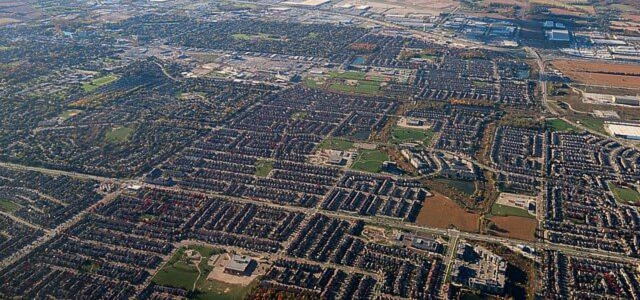Milton’s Rich History: From Indigenous Roots to Modern Growth
Prior to Milton becoming the thriving community it is today, this land carried stories long before roads, schools, and coffee shops ever lined its streets.
Every hill, creek, and open field has a history, with some stretching back thousands of years. From its Indigenous roots to its rise as one of Ontario’s fastest-growing towns, Milton’s story reflects resilience, innovation, and respect for the land.
Keep reading to learn how Milton grew from its earliest beginnings into the welcoming town families call home today.

Indigenous Heritage and Early Land Use
Long before settlers arrived, Milton’s land sat within the traditional territory of Indigenous peoples, including the Mississaugas of the Credit First Nation. This region had rich soil for agriculture, freshwater streams for drinking and fishing, and forests filled with game for hunting. The land provided everything to sustain community life.
The Credit River and Sixteen Mile Creek were essential for travel and trade, connecting communities and allowing for cultural exchange. The connection between the people and the land ran deep, with centuries of knowledge, stewardship, and tradition shaping the balance between living and protecting the natural world.
Early European Settlement
In the early 1800s, settlers began arriving, drawn by fertile farmland and fresh water. After land treaties opened portions of the region for settlement, small homesteads popped up across what’s now the Halton Region.
The area that became Milton started with a handful of farms and a few mills along Sixteen Mile Creek. One of those mills belonged to Jasper Martin, who built a gristmill that sparked the growth of the surrounding community.
Locals started calling the area “Mill Town,” which eventually became Milton. As more
families arrived, the town’s layout began to take shape around Martin’s mill, with roads, a post office, and small shops following soon after.
Industrial Growth and Innovation
By the late 1800s, Milton was buzzing with progress. Agriculture remained central, but local industries began to expand. The mills powered by the creek attracted businesses like tanneries, blacksmiths, and carriage works.
The Grand Trunk Railway helped Milton build a vital connection to Toronto and Hamilton, opening new trade and travel opportunities. With new access came new ambition. Small factories and workshops emerged, and local innovation began shaping Milton’s economy.
Stone from nearby quarries helped build schools, civic buildings, and churches, many of which still stand today.
Expansion and Modern Development
Through the 1900s, Milton continued to grow steadily, keeping its small-town character while embracing new development. Agriculture still defined much of the local economy, but modern industries and businesses began appearing.
By the late 20th century, the town saw a significant shift. Families moved from Toronto and surrounding areas in search of more space, better affordability, and that close-knit community feel. Milton’s location near major highways made
commuting
easy, and developers responded with new neighbourhoods, parks, and schools.
What was once a peaceful agricultural town has grown into a busy, modern suburb that still carries a touch of its small-town charm. Yet, despite all the changes, the community never lost its sense of history. Old landmarks stand beside new developments, uniting generations and keeping Milton’s story alive.
Heritage Sites and Cultural Traditions
You can celebrate Milton’s past through the Milton Historical Society, which maintains archives and hosts walking tours that spotlight local landmarks. Waldie’s Blacksmith Shop, one of the oldest operating forges in Ontario, lets visitors experience early trades firsthand.
The Halton County Radial Railway Museum showcases vintage streetcars and trains. Country Heritage Park, a living history museum just outside town, brings the area’s agricultural roots to life with restored buildings and interactive exhibits.
Seasonal festivals, farmers’ markets, and local fairs celebrate the old and new, where residents can sample modern cuisine one moment and step into a heritage event the next. It’s a town that honours its roots while moving confidently toward the future.
Looking Back, But Always Moving Forward
Milton’s history keeps evolving with every new home and family that arrives. What began as a simple mill by the creek has grown into a community where history and progress flow side by side. Today, it’s a place that keeps its small-town heart while welcoming modern life.
Milton’s growing, and your next chapter could start right here. Flowers Team Real Estate can help you find the home that fits your story.
Flowers Team News













